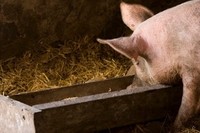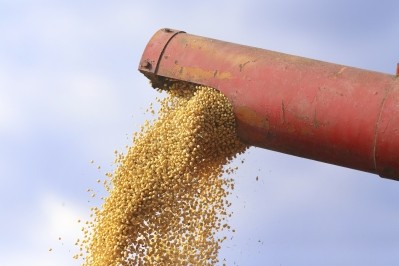USDA: weather aids rice planting, as feed corn prices fall in Thailand

Details of changes to the feed and grain markets in Thailand were included in an agricultural specialist’s report released Thursday by the US Department of Agriculture’s (USDA), Foreign Agricultural Service.
Cultivation for the main rice and corn crop for the marketing year (MY) 2017/18 happened more quickly than in the marketing year 2016/17, the USDA said. And, the Thai economy grew at a rate of 3.3% for the first quarter of 2017.
“The sale of feed-quality rice stocks has created downward pressure on farm-gate prices for corn as feed mills are substituting rice for corn and imported feed wheat in swine feed rations,” the department said. “Additionally, import demand for feed wheat has continued to decline due to the government’s import restrictions.”
Producers also may be turning to dried distillers grain as an alternative feed ingredient, as work to promote the co-product in Southeast Asia from the US Grains Council continues. In 2015/16 the country imported about 587,000 metric tons of the ingredient.
Consumption of the feed ingredient in Southeast Asia has been rising as second tier cities, including Bangkok, grow, Manual Sanchez, assistant director in Southeast Asia for the US Grains Council told us in an earlier interview.
“Southeast Asia has undergone an amazing transformation into a rapidly modernizing economic powerhouse,” he said. “Southeast Asia’s economy can be described by the trend sweeping the region: the rise of middle class consumers and companies chasing their wallets.”
Feed rice specifics
Sufficient water for irrigation has increased the rate of rice cultivation, the USDA said. By mid-May about 0.3m hectares of the main-crop rice was planted in irrigated areas, compared to 4,800 hectares planted during the same timeframe last year.
About 30% of the main crop is in irrigated areas, the department said. And water reservoir levels are more than twice last year’s levels.
Non-irrigated areas have started preparation work for rice planting, which is expected to finish by August, the department said. Overall crop production for the MY2017/18 is expected to be 19.5m metric tons – about 5% more than last year’s crop.
Since January, the government has sold about 1.6m metric tons of feed-quality rice, the USDA reported. Much of that rice is thought to be replacing corn and imported feed wheat in swine rations.
It is estimated that the government still has about 2.2m metric tons of feed-quality rice, the department said. “The government is expected to issue a new tender for these remaining feed-quality rice stocks in late June 2017,” it added.
“However, the sale of the remaining feed-quality rice stocks will be challenging as supplies of new-crop corn will be entering the market in July 2017, creating downward price pressure on feed quality rice,” the USDA said.
Corn and feed wheat details
Corn exports from the MY2016/17 have been increased to 0.7m metric tons, the department said. The change stems from an unexpected rise in exports during the first 10 months of the marketing period.
Exports have been predominately destined for the Philippines and Vietnam, the department said. The increase in corn supplies that could be exported may reflect the substitution of feed wheat and feed rice in swine feed.
“Additionally, feed mills are likely to hold minimal carry-over stocks of corn as they expect periodic harvesting of MY2017/18 corn production to begin in July 2017 due to favorable weather conditions,” the department said.
Domestic corn prices have been dropping, the USDA said. Farm-gated prices declined 7% from March to April and were 22% down from the same period the year before.
The price drop in April happened after government implemented measures intended to stabilize domestic corn prices by linking domestic corn purchases to the ability to import feed wheat, the department said. “Domestic corn prices are expected to continue to face downward pressure due to the sale of feed-quality rice stocks, which is used as a substitute for locally produced corn and imported feed wheat in swine feed rations,” it added.
However, overall wheat imports for the first nine months of MY 2016/17 were down about 7% from the same period the previous year, the department said. The drop is mainly based on a reduction in imported feed wheat.
“Post’s forecast for total wheat imports remains unchanged at 3.6m metric tons in MY2016/17 and 3m metric tons in MY20217/18,” the USDA said. “This is a 23% and 17% reduction in total wheat imports due to the government’s import restrictions on feed wheat as well as the rice substitution for feed wheat in swine feed ration.”












